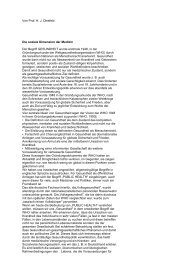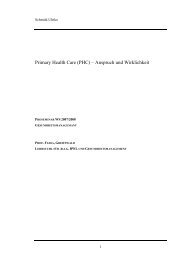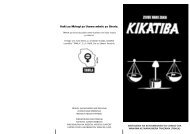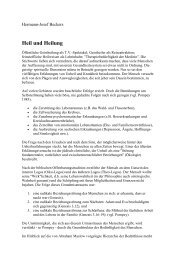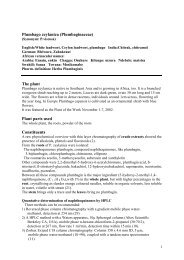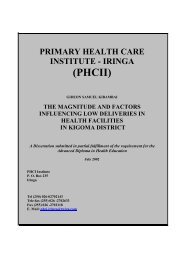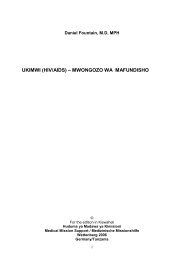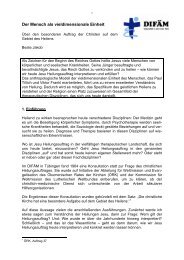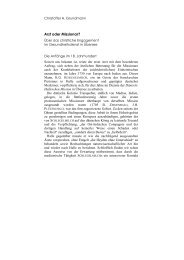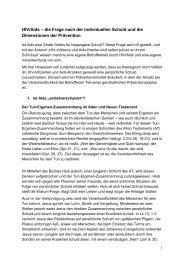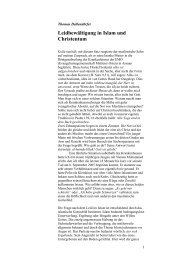Tabebuia impetiginosa, Tabebuia avellanedae ... - MMH/MMS
Tabebuia impetiginosa, Tabebuia avellanedae ... - MMH/MMS
Tabebuia impetiginosa, Tabebuia avellanedae ... - MMH/MMS
You also want an ePaper? Increase the reach of your titles
YUMPU automatically turns print PDFs into web optimized ePapers that Google loves.
The apoptosis in Hep G2 hepatoma cell line was caused through induction of Bax and<br />
activation of the proteolyse of caspase-3 and ñ9, maybe (38).<br />
In human bladder cancer T24 cells the growth could be inhibited by modulation of the<br />
Bcl-2 family and the activation of caspase. The fl-lapachone induced apoptosis is<br />
mediated by the mitochondrial-signalling pathway, at least in part. (15,38).<br />
Neovascularization is an essential process in tumour development. Lapachone<br />
treatment lowered the intracellular cGMP levels and the mitochondrial membrane<br />
potential, activated calpain and caspase potential. From this the endothelial cell death<br />
resulted. Addition of NO downregulated the lapachone induced cGMP depletion and<br />
protected the cells from apoptosis. Exogenous NO protects endothelial cells against<br />
the lapachone caused cell death, but not the anti-angiogenic effect.<br />
The authors believe fl-lapachone is a potential anti-angiogenic drug (14).<br />
An ethanol extract of T. barbata, locally known as ìpalo de arcoîto indigenous people<br />
at the upper Orinoco and Amazonas rivers, was fractionated by a brine shrimp<br />
lethality assay and column chromatography. It consisted of five naphthoquinones<br />
named lapachol 1-5 and was significantly toxic against A-549 human lung<br />
adenocarcinoma, MCF-7 human breast carcinoma, and HT-29 human colon<br />
carcinoma cells. The five isolated compounds were shown to be inhibitors of electron<br />
transport in rat liver mitochondria with IC50 values in the range of 15-82.5 µM (7).<br />
Chemopreventive activity<br />
In order to get better activity against cancer derivatives of lapachone were<br />
synthesized. They showed a promising new efficacy and were assayed by the<br />
National Cancer Institute (NCI, USA), especially for their binding to DNA and for<br />
their redox properties (Renou SG, Asis SE Pharmacy 2003).<br />
Among 45 semi-synthetic derivatives of naphthoquinones, naphthoimidazole N1 was<br />
the most active one against Trypanosoma cruzi and its living forms. The effect on<br />
intracellurar forms was 25 times higher than that for macrophages and heart muscle<br />
cells. N1 treated parasites presented an abnormal chromatin condensation and<br />
mitochondrial damage. In epimastigotes the activity of succinate C reductase was<br />
inhibited (18).<br />
In Japan stereoselective naphthoquinones were produced chemically utilizing the<br />
Noyori reduction. The authors declare, that No 1 of these compounds shows a potent<br />
cytotoxicity against some human tumour cell lines, but less cytotoxicity against other<br />
normal human cell lines, compared with that of mitomycin (39).<br />
Analgesic activity of naphthoquinones<br />
The alcoholic (80 %) extract of <strong>Tabebuia</strong> chrysotricha heartwood, separated by<br />
column chromatography resulted lapachol, dehydro-alpha-lapachone and 5-hydroxy-<br />
2(1`-hydroxy ethyl) naphthol/2quinones 3-b/ furan-4,9-dione.<br />
Two groups of ten Swiss male mice (25-35 g) were given the alcoholic extract<br />
200 mg/kg and lapachol 80 mg/kg intraperitoneally and were placed on a hot plate<br />
(50-55 C). The response time to the hot stimulus showed a very significant (p




